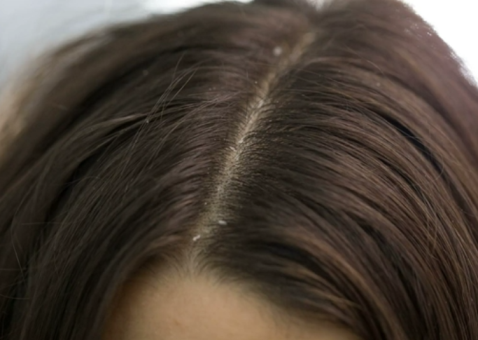| "Descrizione" by bitliner88 (1153 pt) | 2020-Nov-24 12:23 |
Review Consensus: 17 Rating: 8.5 Number of users: 2
| Evaluation | N. Experts | Evaluation | N. Experts |
|---|---|---|---|
| 1 | 6 | ||
| 2 | 7 | ||
| 3 | 8 | ||
| 4 | 9 | ||
| 5 | 10 |
Ammonium chloride is an inorganic chemical compound and is an economic and easily available catalyst.
It is used as acidifying salt, helps to maintain the pH and exerts a slight diuretic effect.
It is used in agriculture as a fertilizer, nitrogen source and in industry in the smelting of metals and aluminum with reagent function.

For imaging and analysis purposes, high concentration ammonium chloride is routinely used to alkalize intracellular membrane compartments under the assumption that it does not cause long-term effects on cellular processes being studied like neurotransmission. However, pathological studies about hyperammonemia have shown that ammonium is toxic to brain cells especially astrocytes and neurons. Here, we focus on ammonium’s physiological impacts on neurons including membrane potential, cytosolic Ca2+ and synaptic vesicles. We have found that extracellularly applied ammonium chloride as low as 5 mM causes intracellular Ca2+-increase and a reduction of vesicle release even after washout. The often-used 50 mM ammonium chloride causes more extensive and persistent changes, including membrane depolarization, prolonged elevation of intracellular Ca2+ and diminution of releasable synaptic vesicles. Our findings not only help to bridge the discrepancies in previous studies about synaptic vesicle release using those pH-sensors or other vesicle specific reporters, but also suggest an intriguing relationship between intracellular pH and neurotransmission (1).

Dandruff and underarm malodor are caused by microorganisms. Personal hygiene products that contain various types of antimicrobial agents are available and are used for the prevention and alleviation of these conditions. However, their effects are not significant and often do not last long. Working toward a solution, hair was treated with thioglycolic acid, a reducing agent, and then with [2-(acryloyloxy)ethyl] trimethylammonium chloride to covalently bond and immobilize quaternary ammonium chloride (QAC) to hair shafts. Fourier transform infrared analysis confirmed the bonding of QAC. Time-kill assays were performed to evaluate the antimicrobial activities against two yeast strains responsible for dandruff, two bacterial strains responsible for underarm malodor, and two typical bacterial skin microflora strains. The time- kill assays revealed the antimicrobial effects of QAC against all tested microorganisms. Washing with detergents decreased the antimicrobial effects compared to hair not washed with detergent. This method could potentially replace personal hygiene products, such as shampoos and antiperspirants, which act as antimicrobial agents in the prevention and alleviation of dandruff and underarm malodor (2).
Indolinone and spiro-indoline derivatives have been employed in the preparation of different important therapeutic compounds required for treatment of anticonvulsants, antibacterial, Antitubercular, and anticancer activities. Schiff bases have been found to possess various pharmacological activities such as antitubercular, plant growth inhibiting, insecticsidal, central nerve system depressant, antibacterial, anticancer, anti-inflammatory, and antimicrobial. Mannich bases have a variety of biological activities such as antibacterial and antifungal activities. In this study, a green, rapid and efficient protocol for the synthesis of a new series of Schiff bases from spiro[indoline-3,4′-pyran]-3′-carbonitrile derivatives using ammonium chloride as a very inexpensive and readily available reagent. The prepared compounds were assessed in vitro for their antimicrobial activity. Also, the cytotoxic activity of the prepared compounds was assessed in vitro against human cells line MCF7 breast cancer. Good activity was distinguished for Schiff bases from spiro[indoline-3,4′-pyran]-3′-carbonitriles, with some members recorded higher antimicrobial and anti-breast cancer activities (3)
Molecular Formula : NH4Cl or ClH4N
Molecular Weight : 53,489
CAS : 12125-02-9
References___________________
(1) Ammonium chloride alters neuronal excitability and synaptic vesicle release.
Lazarenko RM, DelBove CE, Strothman CE, Zhang Q.
Sci Rep. 2017 Jul 11;7(1):5061. doi: 10.1038/s41598-017-05338-5
(2) Stable Antimicrobial Activity Achieved via Immobilization of Quaternary Ammonium Chloride on Hair.
Kim JI, Son SK.
Biocontrol Sci. 2018;23(2):71-76. doi: 10.4265/bio.23.71.
(3) Ammonium chloride catalyzed synthesis of novel Schiff bases from spiro[indoline-3,4'-pyran]-3'-carbonitriles and evaluation of their antimicrobial and anti-breast cancer activities.
Al-Shareef HF, Elhady HA, Aboellil AH, Hussein EM.
Springerplus. 2016 Jun 24;5(1):887. doi: 10.1186/s40064-016-2458-0.
| Evaluate |

